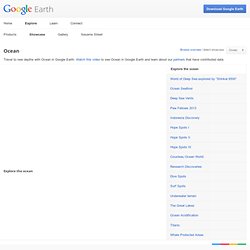

US Wildfire Activity Web Map. Age 11-14 (Key Stage Three) AnimalAdap. KDE Santa Barbara. Welcome to the Kids Do Ecology Biomes Pages!

Aquatic Biomes | Terrestrial Biomes | GAMES! What are biomes? Biomes are regions of the world with similar climate (weather, temperature) animals and plants. There are terrestrial biomes (land) and aquatic biomes, both freshwater and marine. Would you like to know what the weather is like in different biomes around the world? How many biomes are there? Games Links to more information: Kids Konnect: Biomes Enchanted Learning: Biomes ThinkQuest: Biomes Major Biomes of the World NASA - Mission: Biomes World Biomes Back to the top Back to Biomes Index.
Biome. BBC Nature - Adaptations and behaviours. Photos: "Zombie" Ants Found With New Mind-Control Fungi. Kid's Corner - Main Page on Animal Classification - Mammals, Reptiles, Birds, Amphibians and Fish. San Diego Zoo - Kids. Project Noah. Teachers. For Teachers You can use Dive and Discover as a resource for: Extensions of existing lessons Homework assignments An introduction to a science unit A class project One lesson Multiple lessons during science unit With Dive and Discover, your students are at the frontline of scientific inquiry as they join scientists—geologists, chemists and biologists—who are exploring the seafloor and making amazing new deep-sea discoveries.

Daily updates, photos, videos and email correspondence with scientists from these research vessels allow your students to follow the progress of the scientific missions and find out about life on the floating laboratories at sea. Strategies for Incorporating Dive and Discover in the Classroom With the aid of educators involved in previous Dive and Discover expeditions, we have created a list of suggested strategies for use in the classroom. Hands-On Exploration - Classroom Activities Historical Connections Data Collection and Analysis Scientific Inquiry Problem Solving.
Discovery Education. The Secret Lives of Wild Animals. Encyclopedia of Earth. Explore the Ocean with Google Earth. Explore the ocean Watch video World of Deep Sea explored by “Shinkai 6500” A manned research vehicle, "Shinkai 6500", which is operated by JAMSTEC, will lead you to the world of unknown deep sea.

Download in Google Earth Ocean Seafloor Explore the seafloor with Columbia University's Lamont-Doherty Topography Synthesis and new data from CSUMB and UHM-SOEST. Watch video Deep Sea Vents Discover underwater volcanoes and hydrothermal vents with the Ridge 2000 Deep Sea Vents Tour. Watch video Pew Fellows 2013 Learn about the 2013 Pew Marine Fellows who are solving the challenges of ocean protection - one piece at a time.
Watch video Indonesia Discovery Come on a joint Indonesia USA deep sea expedition. Watch video. How Animals See the World. Darwin, a naturalist's voyage around the world - CNRS sagascience. Go On a Virtual Journey with Charles Darwin. Who Pooped? - Identify Animals by Scat/ Dung. Even if it is slightly gross Who Pooped?

Is a fun and educational site through which students try to identify animals by their scat or dung. I was reminded of the site over the weekend and thought that I just had to share it again. Who Pooped? Is an interactive game in which students learn about various animals by guessing which animal created which pile of poop. Believe it or not, there is actually some good information about the animals that follows each round of guessing who created which poop.
Applications for EducationIf they can get past the "hilarity" of the "poop" images and noises, Who Pooped?